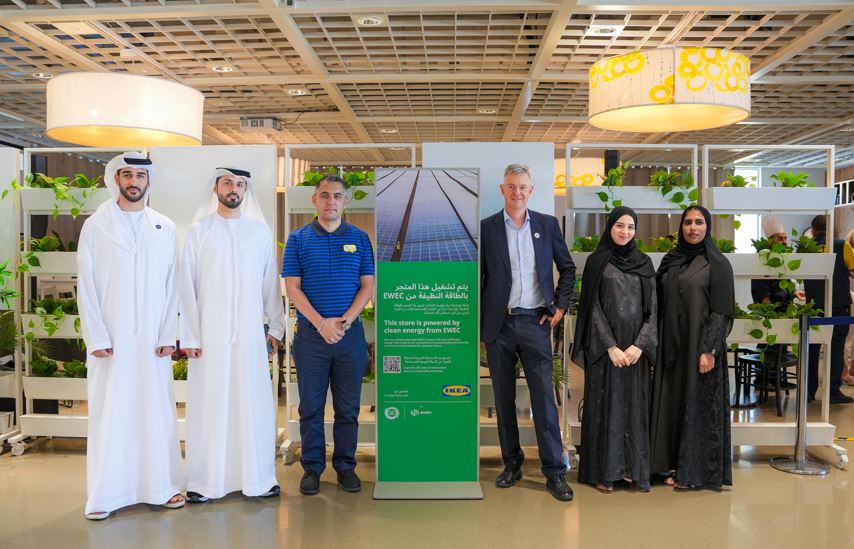IKEA has long been synonymous with flat-pack furniture and Scandinavian design—but in the Middle East and North Africa, it’s also becoming a beacon for responsible retail.
From pioneering in-store circularity to rolling out renewable-energy partnerships, Al-Futtaim IKEA (covering the UAE, Qatar, Egypt, and Oman), is proving that sustainability can be both economically viable and culturally resonant.
In a region where rapid growth often outpaces environmental safeguards, IKEA is translating global green commitments into local impact—retraining its stores, rethinking waste, and re-energizing communities to live more sustainably.
Pooja Dhingra, Regional Sustainability Manager at Al-Futtaim IKEA, speaks to ESG MENA about embedding circularity, reducing food waste, advancing product sustainability, and forging new regional partnerships.
Covering operations in the UAE, Qatar, Egypt, and Oman, Dhingra outlines IKEA’s approach to responsible consumption in some of the Middle East’s fastest-growing markets.
- What are your top sustainability priorities across IKEA’s regional operations, and what have been your key achievements in the past year?
Pooja Dhingra: Our focus has been on translating global sustainability strategies into actionable, local initiatives. One of our biggest achievements is enhancing public awareness. We’re empowering customers through dedicated “sustainable living shops” in our stores, where they learn how to adopt eco-conscious habits.
We’ve also made major progress in circularity. Our waste management systems are robust—we segregate, recycle, and reduce waste across all stores. In Doha, for instance, we’ve achieved zero food waste to landfill by working directly with the municipality. In other markets, we use in-house anaerobic digesters and composters. Additionally, we’re redistributing used coffee grounds to landscaping firms as compost.
- How do you promote awareness and behavioral change among staff and customers?
Dhingra: We’ve created a network of voluntary “sustainability ambassadors” in every store—employees who take on this role in addition to their primary duties. They train staff across all functions—sales, interior design, operations—on how to communicate product sustainability to customers.
We also run public campaigns. One example is our recent six-week “Earth Weeks” campaign during March and April. Each week focused on key local challenges such as energy and water conservation, waste reduction, and clean air. We highlighted the everyday sustainable practices of often-overlooked contributors—especially mothers, who pass down essential eco-conscious habits.
- How is IKEA ensuring the sustainability of its product offerings?
Dhingra: At IKEA, we don’t single out “sustainable” products—sustainability is embedded in our democratic design framework. By 2030, our goal is for all products to be made from either renewable or recycled materials. It’s difficult to put a precise figure on current levels due to the scale of our supply chain, but we’ve made strong progress.
All our cotton is 100% sustainably sourced through the Better Cotton initiative in collaboration with WWF. We use recycled plastics wherever possible and rely on stable blends to avoid compromising product quality. Our fabrics include Lyocell (from waste wood or cotton) and recycled polyester.
- Have you introduced energy-saving solutions in-store?
Dhingra: Absolutely. Since 2015 all our bulbs have been LED, saving around 85% more energy. But we don’t stop there—we continuously upgrade lighting to improve efficiency. Our batteries are rechargeable up to 1,000 times, and shifting over to our reusable water bottles[PD1] can prevent almost 1,500 single-use bottles from going to the landfill annually.
- How are you tackling food waste operationally and among consumers?
Dhingra: Food waste is a major challenge in the region, and we’re addressing it from multiple angles. We’ve introduced AI-powered tools in our stores to cut operational food waste and are expanding this across markets.
For customers, we educate through signage and direct interaction—encouraging smaller portions and offering refills instead of over-serving. We’re also planning a new study into food behavior and waste habits specific to the MENA region.
- Are there plans for furniture recycling or product take-back services?
Dhingra: Yes, we’re actively working on a product take-back initiative. While the collection is relatively simple, the real challenge lies in recycling. Infrastructure in some markets isn’t yet equipped to process certain materials. Our commitment is that anything returned—if not resellable—must be kept out of landfill. We aim to announce the full rollout soon.
- What’s your view on fashion and fabric waste in the region?
Dhingra: While we don’t currently recycle fashion at scale, we’re looking at ways to integrate this into our take-back programs. The challenge is significant, but collaboration with other players could help make it viable.
- Are you introducing electric or hybrid trucks for delivery services?
Dhingra: Yes, we currently have a 10-ton electric truck operating between Abu Dhabi stores for store[PD2] replenishment. As of May 2, we launched a new milestone: in partnership with EWEC, all our Abu Dhabi stores will now be powered by clean electricity from solar and wind sources. That includes the truck. This marks a real shift, allowing us to operate with near-zero emissions from store to store.
- How is IKEA approaching partnerships to advance sustainability?
Dhingra: We’ve recently relaxed some of our global co-branding guidelines to facilitate more partnerships—particularly those that benefit people and the planet. Whether it’s reducing food waste, promoting clean air, or encouraging efficient water and energy use, we’re keen to work with organizations that share these goals. Awareness and impact are key.
- Looking ahead, what’s on the horizon for the next 12 months?
Dhingra: Our partnership with EWEC kicks off an exciting new chapter. We’ll also continue to expand awareness programs and deepen collaboration with government bodies. Ultimately, every partnership or initiative we take on must serve our core mission: helping people live more sustainably.



